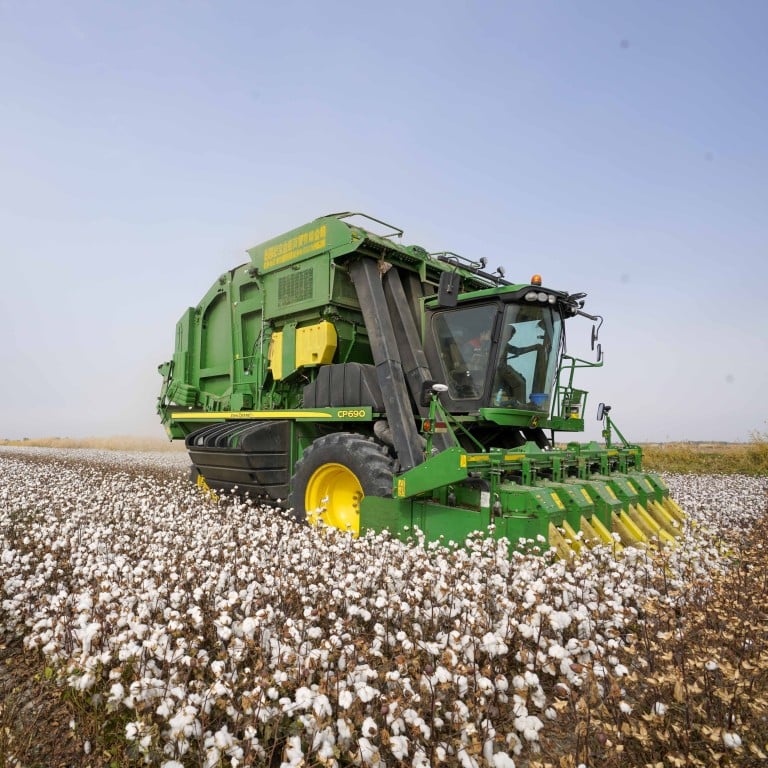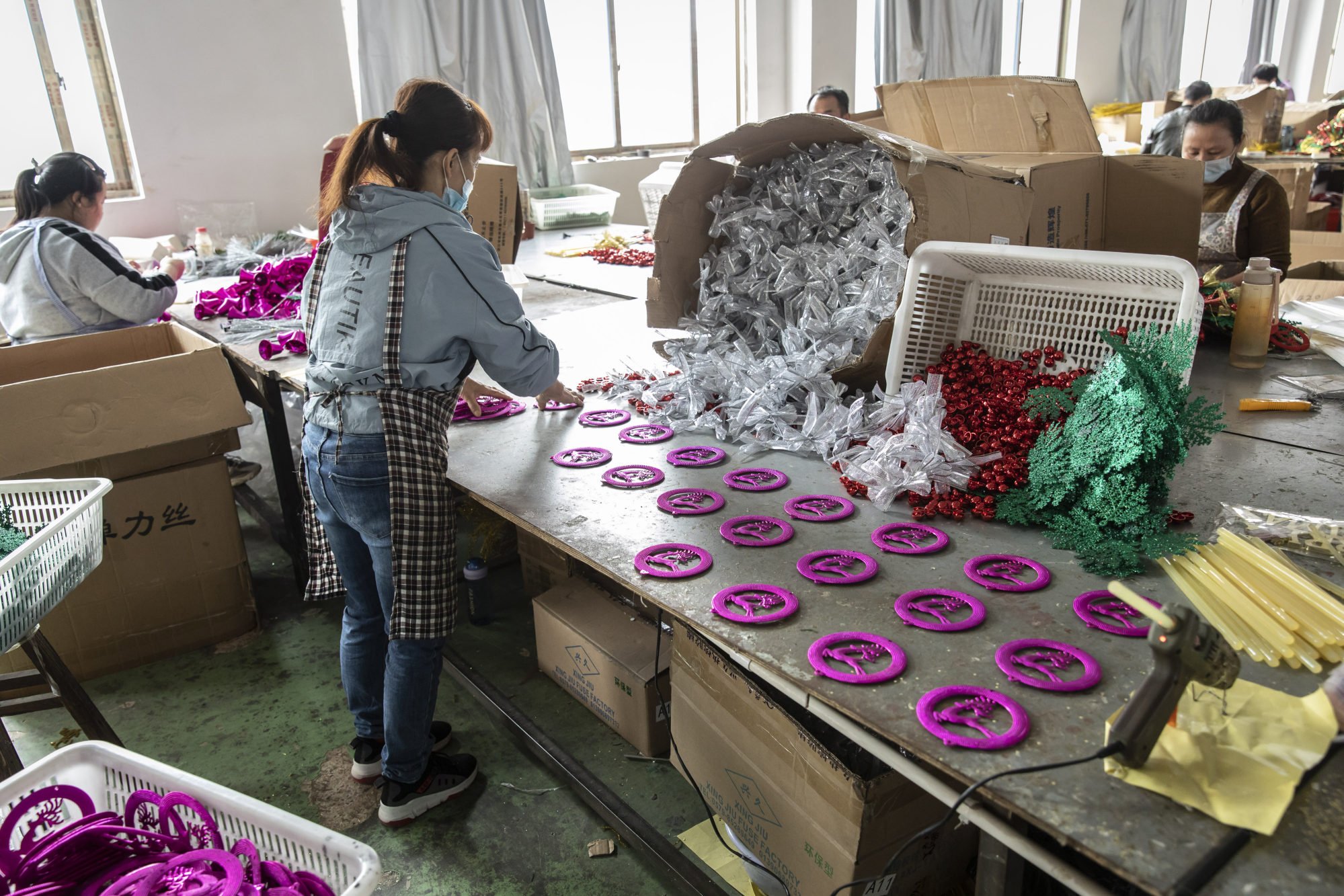
Xinjiang exports to US hit two-year high despite Uygur Forced Labour Prevention Act taking effect
- Industry observers surprised by leap in reported shipments for July, as many believed number would plummet to near zero after law took effect in June
- Importers now required to rebut presumption all goods from the tightly controlled far-west region of China are tainted by forced labour
Xinjiang’s clothing exports to the United States surged to their highest point in nearly two years in July, the first full month after the US began enforcing a law to block goods from the far-west region of China due to forced labour concerns there, according to Beijing’s most recent customs data.
US Customs and Border Protection declined to comment on the official export numbers, whose volume surprised industry observers in the US and China alike. But the agency said it had already begun “as we anticipated”.
“It should be going the other way,” said Michael Roll, a customs and trade lawyer in Los Angeles at the law firm Roll and Harris, of the total. “To me, that doesn’t add up.”
“I would wager money that [US Customs and Border Protection] is on to that and has stopped those shipments, or will stop them,” Roll said.
Xinjiang’s top individual export to the US in July was Christmas decorations, according to the Chinese customs data, worth more than US$1.5 million. Apparel came to more than US$6 million dollars, the data showed.

One trader in Xinjiang said existing contracts between US and Chinese merchants meant exporters might proceed with shipping their goods and declare them to Chinese customs. But the exporters “don’t know whether it would be rejected or detained at US customs, or [if] the importers will help with the clearance”.
Roy Liu, a Washington-based partner in the law firm Hughes Hubbard & Reed, said perhaps either US customs was still figuring out how to identify goods from Xinjiang, or “a substantial portion of the goods” included in Beijing’s customs statistics had been “detained by US customs” and then sent back to China or elsewhere.
Others questioned whether the figures were accurate at all. One lawyer in China described the export data as “just a pep talk” that the Xinjiang authorities were giving themselves amid an intense crackdown from Washington on trade with the region.
Boon or burden? Asian alternatives to Xinjiang cotton find US ban challenging
“Local government faking figures in all areas is a common thing,” said the lawyer, who like the trader in Xinjiang spoke on condition of anonymity.
Both China’s General Administration of Customs and Ministry of Commerce did not respond to requests for comment.
The Uygur Forced Labor Prevention Act operates on an assumption that all goods coming from Xinjiang are tainted by forced labour. It requires importers to prove otherwise under a legal concept known as a “rebuttable presumption”.
So far, said Jeffrey Quinones, a spokesman for US Customs and Border Protection, the agency has processed a number of requests by importers “contending the supply chain for the imported good does not touch Xinjiang or an entity on the UFLPA Strategy’s Entity List”, which includes multiple textile companies.
But Quinones added that “no importers have requested an exception to the presumption and submitted documentation to rebut it”.
Experts say proving there is no forced labour in a good’s supply chain from Xinjiang is nearly impossible because the region has become tightly controlled and any auditors allowed in would not be able to speak freely with workers, who are said to be under intense surveillance.
“Rebutting it is going to be very difficult because they’re using a clear and convincing evidence standard,” said Olga Torres, managing member of Torres Law, a firm in Washington specialising in trade and national security.
“It’s just going to be so burdensome and expensive to fight it that they may just say, ‘we’re just not going to import it any more’.”
‘Barely a boost’: China to buy Xinjiang cotton as US ban hits home for mills
The law was passed in response to widespread concerns in the US and elsewhere that Beijing’s assimilation and mass-detention policies targeting Uygurs and other mostly Muslim ethnic minority groups involved forced labour.
China denies all accusations of rights abuses in the region.
The US customs agency said it would focus its attention on the goods considered to be at highest risk for forced labour.
“I think the conclusion is that it will be hard for CBP to catch everything in the beginning,” said Ana Hinojosa, a former executive director for trade remedy law enforcement at the agency. “But they will continue to get better at their targeting.”
How will Washington’s ‘forced labour’ law impact Xinjiang’s economy?
In financial year 2022, Quinones said the customs agency had already detained “over 2,000 shipments valued at US$393.6 million for forced labour concerns”.
Especially in the early months of enforcement, there may still be banned goods that enter the US unnoticed, and some of them could have been included in Xinjiang’s July exports, experts said.
But they also caution it would be a big gamble for businesses to ignore the law, which passed Congress late last year, and just hope they escape detection.
“Then you’re just rolling the dice,” said Roll, the lawyer in Los Angeles. “One day you might get a surprise. You might not, but you can’t run a business that way.”
Additional reporting by Kinling Lo


